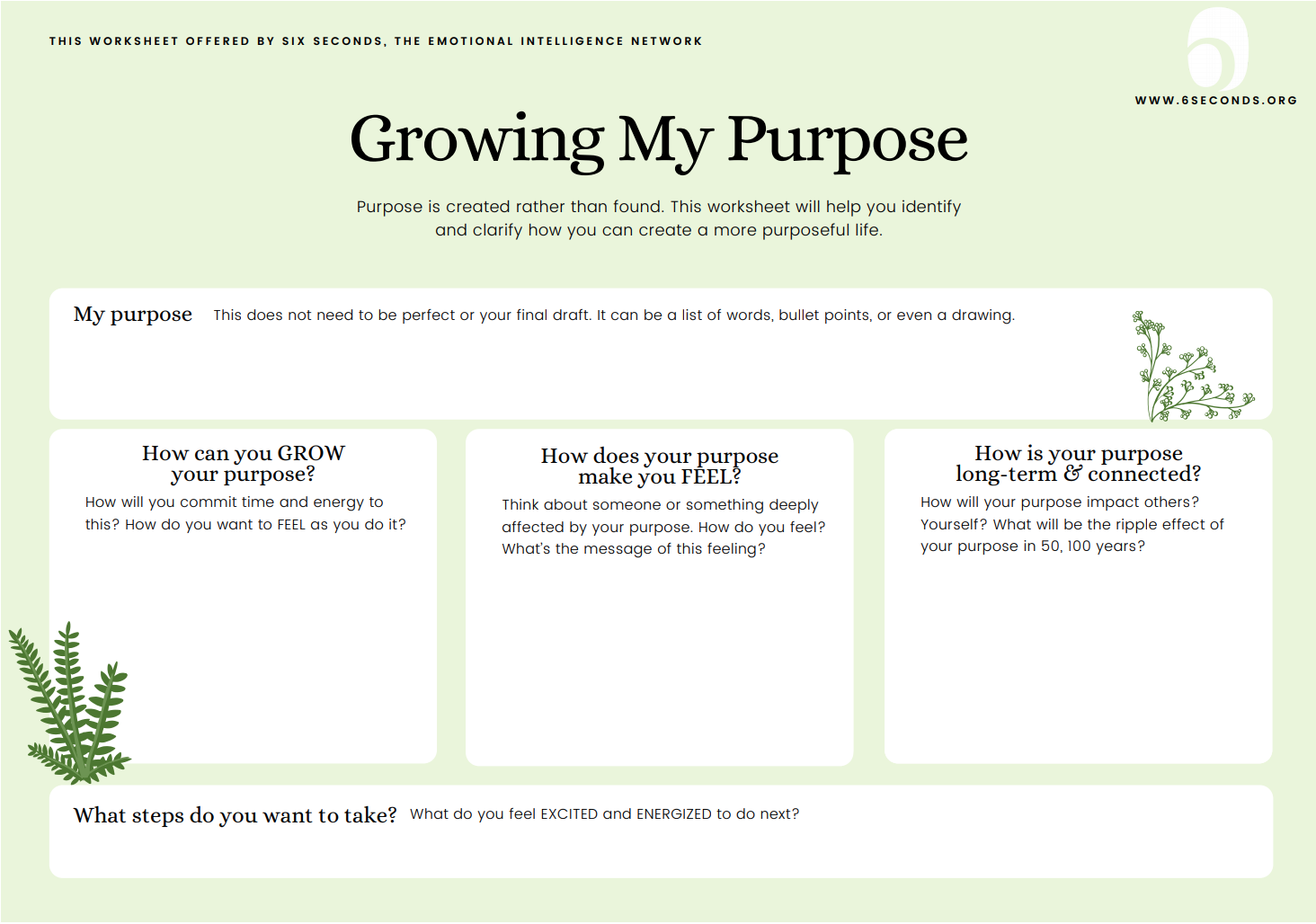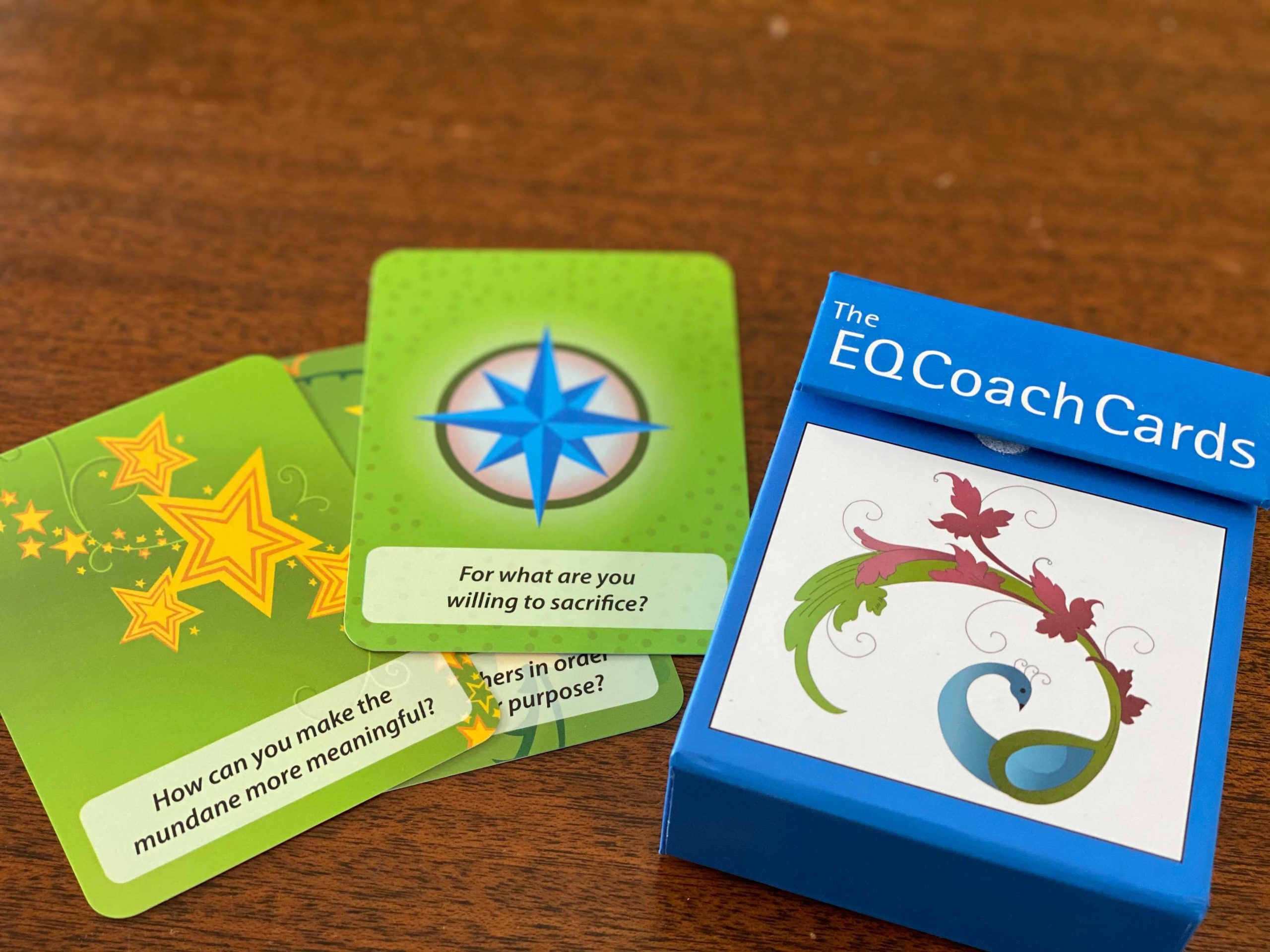Why Telling Your Coaching Clients to “Find Your Purpose” Is Bad Advice
Purpose is made, not found. But how do you make it? Here are 3 practical tips you can share with clients to grow purpose with emotional intelligence.
by Michael Miller
Have you ever been told to “find your purpose”?
It seems like good advice. Research over the last 25 years has linked purpose to everything from better relationships to preventing Alzheimer’s disease. It’s “the no. 1 driver of wellbeing,” and “decreases your risk of dying early,” according to a meta-analysis of studies on life purpose. The research is solid. The problem is people’s expectations for what exactly “Finding purpose” looks like, and how it will change them.
The common narrative is this: Your purpose is out there, waiting to be discovered. One day, you’ll find it, and everything will be great. You will have endless motivation – since you’ve finally found your purpose – and you’ll be set. This narrative is what John Coleman of Harvard Business Review calls the “Hollywood version” of purpose, and it’s as pervasive as it is harmful. It’s the reason why ‘Find your purpose’ is bad advice.
But examining the Hollywood version of purpose with your clients can help them understand what purpose really is, why it’s so important, and how to use emotional intelligence to grow a deeper, more sustainable connection to purpose.
Free tool for you and your clients to grow life purpose:

Get Purpose Right by Busting 3 Myths from The Hollywood version of purpose
Just like the Hollywood version of love, the Hollywood version of purpose is full of myths and misconceptions that ultimately lead to frustration and disappointment. There are 3 key myths:
1 Your purpose is something out there, waiting to be discovered
2 Your purpose is fully formed and neatly packaged
3 Discovering purpose makes everything easy
This misunderstanding of purpose has real negative consequences. A team of researchers led by growth mindset expert Carol Dweck ran a series of experiments to look at the effects of “Hollywood purpose.” In the studies, they divided participants into two groups: one group thought of their interests or passions (the raw ingredients of purpose) as fixed, waiting to be discovered. The other group thought of their passions as something to be developed.
What happened to the people who bought into the 3 myths?
Less creativity: In the end, they showed significantly less interest in anything outside of their existing interests or passions. Since it’s fixed, no need to explore!
Less motivation: even more alarmingly, the fixed group expected to have limitless motivation when they did engage with their passions, so they tended to underestimate obstacles, and were quick to give up when obstacles did arise.
The Hollywood version of finding purpose sets up sky high hopes – and keeps people stuck in a cycle of crushing disappointment and constant searching.
What’s a more realistic way to look at purpose, and start to feel it? Here’s a different 3-step framework for thinking about purpose, with tips and coaching questions for putting it into action with your clients.
How to Get Purpose to Work: 3 Tips to Feel Purpose with Emotional Intelligence
Purpose in real life is beautifully messy. It’s something you make every day. You commit, and fail, and re-commit. It’s a story you create, based on your emotions and connected to your values. Then you practice living that story out loud.
In this messy, realistic version, Six Seconds CEO Josh Freedman offers 3 tips for helping clients grow purpose:
Note how different they are from the Hollywood version.
1 Purpose is not something we FIND or SEEK, but something we MAKE and GROW. Purpose is made as we invest in something, and feel connected to it. “Find something you’re good at,” says NYU Stern Business professor Scott Galloway, “then spend thousands of hours applying grit, perseverance and sacrifice to become great at it. That will make you passionate about whatever it is.” Freedman agrees, and stresses the central role of emotions in that process of investment: “When we commit our time and energy, we become more emotionally invested in an idea, and that idea grows emotional power.” That emotional power fuels further investment, and the growth of purpose.
One of the questions on the EQ Coach Cards pictured below, which is a great resource for coaches, gets to the heart of this:
“How can you make the mundane more meaningful?”
2 Purpose can be FELT if we pay attention to emotional clues. Just like emotional power fuels long-term commitment, emotions give us insight into our values. They are clues about what matters. Emotions at the most basic level help us pay attention to an opportunity or threat. This makes me angry. Why? It must threaten something important. There is a logic to feelings. Ask your client: What’s the message of that feeling? What could it be trying to tell you? In a way, this is still a process of “finding” purpose, but it’s more feeling than finding. It’s in you; not outside of you.
If you or your client is still struggling to decode emotional data and feel purpose, I like the question on the other EQ Coach Card pictured below: “For what are you willing to sacrifice?” Answering this questions can help you identify what you care about, and where you want to grow purpose.
EQ Coach Cards – On sale now in the EQ Store.
Compelling questions to increase self-awareness and actionable insights with clients.
3 Purpose is focused on LONG-TERM GOALS and CONNECTION. As opposed to similar concepts like goals and objectives, purpose has a long-term focus. One of the criteria for the purpose part of the Six Seconds Model of Emotional Intelligence, which we call Pursue Noble Goals, is that it’s a goal that extends beyond your lifetime. Thinking 50, or even 100 years down the road helps clarify what really matters. Help clients articulate purpose in the context of a long-term perspective.
And finally, purpose is about connection, to self and others. Purpose only has staying power when it’s connected to your deeply held values, to who you are and the impact you want to have on the world.
Resources for You and Your Clients
Here are a few resources to learn more, hands-on tools to practice, and an opportunity to go deeper as a coach.
1 Check out Josh Freedman’s Coaching for Coaches series to get actionable, research-based insights for coaches and their clients:
2 Capture the wisdom of leading EQ experts with your own deck of EQ Coach Cards from the EQ Store, or this free worksheet to help clients feel and grow purpose.
3 If you agree that emotional intelligence is the key to unlocking personal and professional potential, consider becoming an EQ Certified Coach.

This unique and powerful program blends ICF competencies with emotional intelligence and neuroscience.
- Pursue Noble Goals in the Six Seconds Model of EQ - July 29, 2023
- Increase Empathy in the Six Seconds Model of EQ - July 26, 2023
- Exercise Optimism - July 24, 2023

Hi there Michael
Thank you for a great video that made me re-evaluate my coaching and look at it with a new perspective and new eyes.
The principle of purpose is also important in relationship counseling and coaching.
On the video page of the video on purpose there is a offer for a free tool on “growing my Purpose” – I seem to be unable to download it.
I am a Six Second EQ-certified member (South Africa – 1999).
My profession is Psychologist & Executive Coach. I do get your regular emails.
Warm regards
Magriet
Hi Magriet,
I’m so glad you found this to be helpful. I apologize you were unable to download the worksheet. I have resolved the issue and forwarded you the free resource. Thanks for being part of the EQ Network!